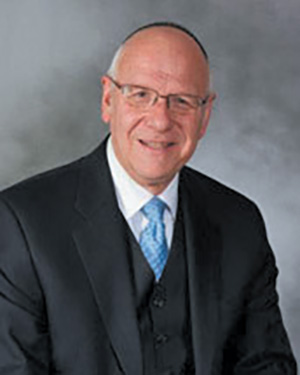
Parshat Vayishlach
“Will the real Ovadya please stand up?”
The author of Sefer Ovadya, and therefore today’s haftarah, is, as the Radak points out, a mysterious figure. Who is he? Rashi follows the view of the Gemara (Sanhedrin 39b) identifying the author as the same Ovadya mentioned in the Book of Melachim I (perek 17) who was a servant of the wicked King Achav and Queen Izevel. There, Ovadya is described as “yarei et Hashem m’od,” i.e., very God-fearing, certainly a fitting description for a prophet. However, he is never called a navi nor does he offer any prophetic message. For this reason, the Ibn Ezra insists that this Ovadya is not the one found in Sefer Melachim, the one who lived at the time of Eliyahu HaNavi, but simply another individual with the same name.
Equally mysterious is the prophecy itself. Ovadya directs his words to the nation of Edom, descendants of Esav (hence the connection to our parsha), but it is unclear to which generation he addresses his message. A common belief was that the prophet’s words were meant for Rome, who was regarded as the “successor” to Edom, and the verses refer to the events surrounding the destruction of the second Beit Hamikdash. The Ibn Ezra rejects that view and believes that Ovadya is directing his words to the Edom of his time. These descendants of Esav would encourage the Babylonian enemy to raze Yerushalayim to the ground (see Sefer Tehillim perek 137), offering no help to their “brother” when the first Beit Hamikdash was destroyed (see pasuk 11 in the haftarah). The Radak, on the other hand, contends that the navi’s words were describing the events of “acharit hayamim,” the “end of days,” when the Jewish nation would be permanently returned to her land and Edom would be punished.
But despite the “mysteries” of this selection, the message and its connection to the events of our parsha are neither secret nor obscure. Yaakov flees his home to escape the wrath of his twin, yet he knows that there would eventually be a “showdown,” a final confrontation, with Esav; indeed, he knew that there had to be that confrontation. This explains the dread he had at the outset of the parsha (“vayira Ya’akov m’od, vayetzer lo”) as well as his puzzling decision to alert his brother of his return. And yet, there was no real confrontation. No argument. No struggle.
Our haftarah, therefore, depicts the final struggle that failed to take place in the parsha. The message of Ovadya was that the resolution of that conflict would indeed take place—but in the future. And that Israel would emerge victorious. The navi reminds us that the just and kind world we are challenged to build could not be formed as long as we refuse to confront and defeat evil. Only when we face and defeat the Esav in this world can we build a Godly society.
And only then will we see the fruition of the final words of Ovadya’s prophecy: “Vhay’ta LaShem ham’lucha, The kingdom shall then belong to Hashem.”
By Rabbi Neil N. Winkler
Rabbi Neil Winkler is the rabbi emeritus of the Young Israel of Fort Lee and now lives in Israel.










